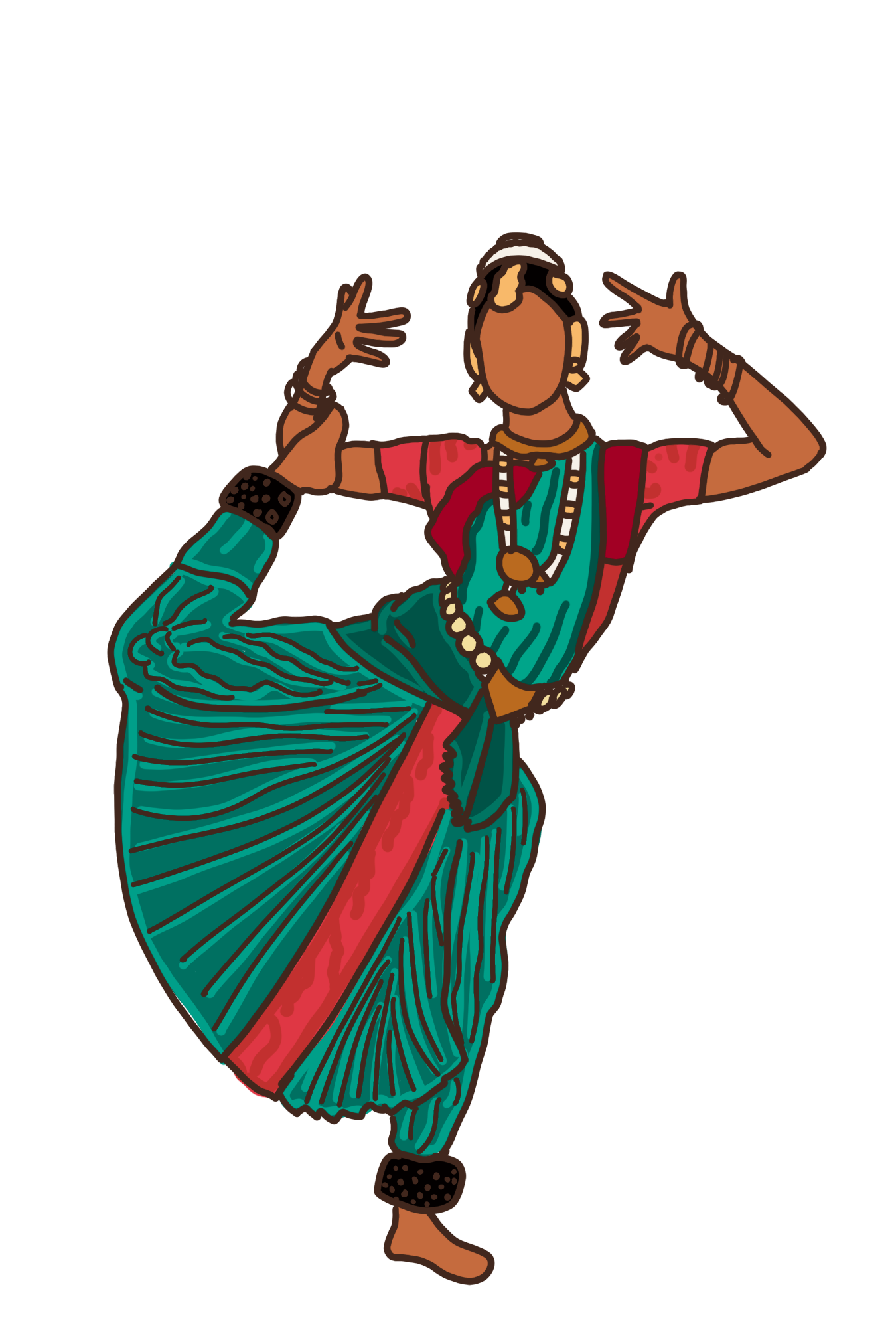Thursday, April 24
Arts Around the World: Bharatanatyam Spotlight
Sonia Ivancic '25 (Arts Editor, 144th Board) in Arts | April 1, 2022

Following the implicit bias workshop on March 22 with Dr. Bryant Marks, where we were told our brains make instant connections between words like “doctor” and “male,” I thought, What is the first thing that comes to mind when we think of dance?” The typical answer is ballet, along with other popular Western dance forms such as hip-hop. With International Night fast approaching, it seems appropriate for me to highlight a lesser-known, non-Western art form: Bharatanatyam, a classical form of Indian dance. I want to spread awareness about this art form not only because I have been dancing it for years, but also because of its unique and overlooked history.
Bharatanatyam originates from the Natyashastra, a book written by the sage Bharata, who is often regarded as the father of Indian theatrical art. Despite people’s often glossing over its existence, the Natyashastra is actually one of the earliest volumes of music, drama, and dance. This text was written between 200 B.C.E and 200 C.E, making its artistic product, Bharatanatyam, one of the oldest dance forms in history. It never fails to amaze me that we still use this text as a guidebook for dancing, and I remember countless Bharatanatyam classes where my peers and I pondered over a certain piece of footwork only for my teacher to say, “Let’s see what the Natyashastra says we should do.”
Many ancient temples in India portray carvings of dancers performing early Bharatanatyam, which helps us estimate that the dance originated over 2,000 years ago. In early India, Devadasis, or temple dancers, devoted their lives to religion and Bharatanatyam, dancing for kings and in temples. As the British colonized India, it extinguished vibrant Indian culture to assert the West’s dominance and power. When temples’ wealth faded, many Devadasis were left without a livelihood. The British used the dancers’ destitution to propagate the dubious claim that all Devadasis were prostitutes, hoping to destroy the art. Once British rule fell in 1947, activists came together to revive Indian arts. In doing so, they brought Bharatanatyam away from the temple and pushed Devadasi culture into a new light where people of all genders and castes can dance, regardless of their religious backgrounds.
Bharatanatyam is a word that practically defines itself: Bha means emotion, Ra music, Ta rhythm, and natyam dance. A foundational concept of Bharatanatyam is adavus, or footwork patterns, and all dancers have a love-hate relationship with these exhausting—yet necessary—technical steps. There are adavus for spinning, lunging, jumping, and so forth. Mudras are well-known lists of hand gestures that depict everything from animals to weapons and gods, which are also used in modern-day yoga. Next are the navarasas, or nine expressions. A dancer must be able to manipulate their facial features to portray emotions like pity or laughter. A combination of all these technical aspects, from footwork to expression to hands, forms a Bharatanatyam dance. This list, however, excludes the necessary evil that is araimundi. Araimundi is a deep squat where one's heels are touching, like a demi-Plié in ballet. The difference, however, is that in Bharatanatyam, almost every dance move must be done in this impossibly low position. No matter how perfect you think your araimundi is, the teacher will inevitably yell at you, “Bend more!”
When we think of graduating, we often think of high school and college. However, you can also officially graduate from Bharatanatyam, not by standing on a podium and receiving a diploma but by dancing 10 solo pieces for a two-hour show. This Arangetram, one’s debut performance, follows a structure called the “path to completion.” The first dance is a welcoming piece, and the second warms up the body. The third, comprised solely of footwork, showcases one's mastery of adavus. The fourth dance focuses on effective storytelling and expressions. The fifth dance is Varnam, acting as a table centerpiece and incorporates all of the dancer’s knowledge in a 20 to 40-minute piece. Following this are Padams, pieces centered around gods, nature, and dancers’ values. Last, but certainly not least, is Thillana, a final test of stamina and the dancer’s true love of the art form.
I could go on for pages, describing this delightful art form and its complex, captivating history. So much is still largely unknown about Bharatanatyam, though it has recently come to the forefront of the dance world. Spreading awareness about an international dance dear to me raises another question: How much are we, as consumers of art, missing out on by remaining oblivious to the hundreds of little-known art forms out there?
Related Articles
- Mirror, Mirror, on the Wall... Who’s the Most Hated of Them all? Melina Kyriakopoulos ’27
- L Factor or L moment? Lawrentians Take the Stage Celestine Sutter ’27
- Spring Orchestra Concert Vincent Jie ’27
- Shedding Light on Julius Caesar Anton Popowitz ’26
- Threaded Up Thursdays: Intertwining Soul and Style Melina Kyriakopoulos ’27
Recent Articles
- Announcing: Valedictorian, Aurelian Speakers, and Faculty Speaker Sophie Liu ’27
- Senior Profile: Sophie Cheng ’25 Katherine Qiu ’27
- Debunking the Dining Hall Debate: Is Lawrenceville’s Dining Really That Bad? Isabelle Lee ’27
- Welcoming Our New VPs for 2025-2026 Sophie Liu ’27
- A Sweet Return: Melba Reopens with New Flavors and Community Spirit Ella Song ’27